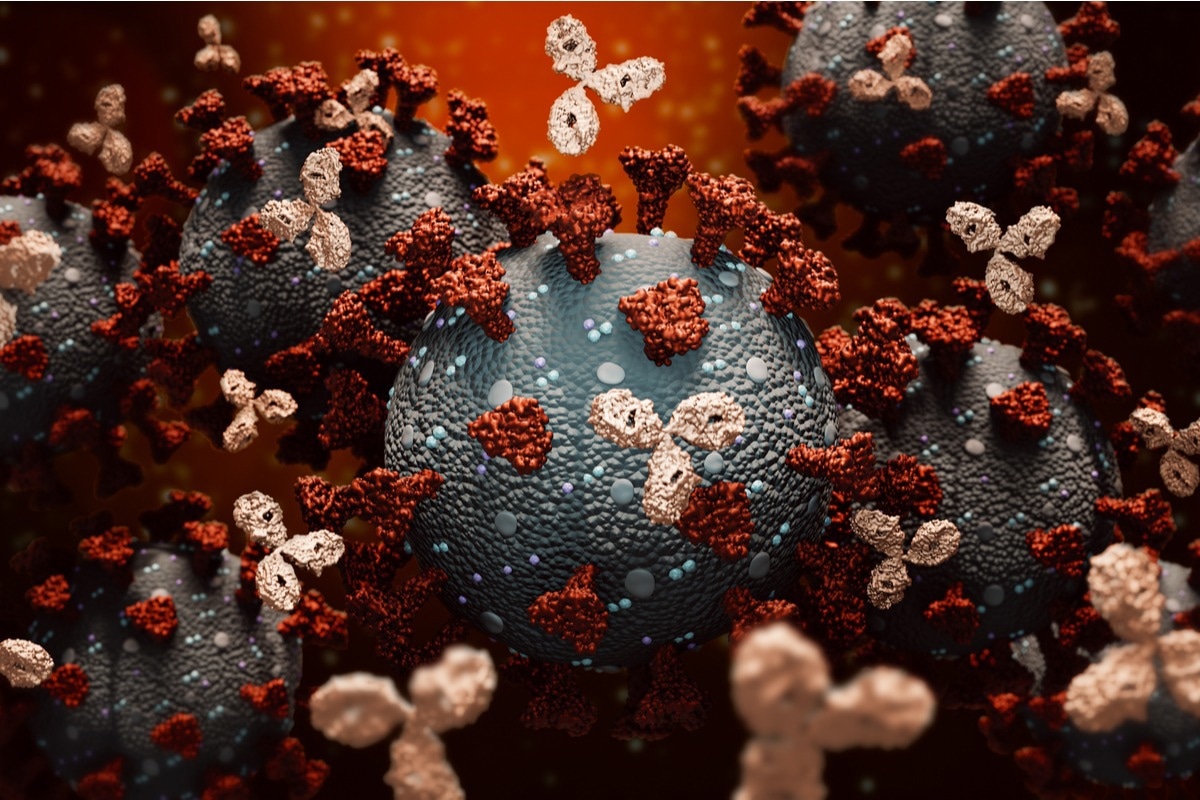In a recent study posted to the medRxiv* preprint server, researchers assessed the in vivo effectiveness of monoclonal antibodies (mAbs) and directly acting antiviral agents against the severe acute respiratory syndrome coronavirus 2 (SARS-CoV-2) Omicron BA.1 and BA.2 sublineages.

Background
The continual emergence of Omicron sublineages has made the efficacy of anti-SARS-CoV-2 therapies authorized for clinical use in the initial coronavirus disease 2019 (COVID-19) phases questionable. In vitro studies have reported that while neutralization efficacy of antivirals such as molnupiravir (MLN), nirmatrelvir/ritonavir (NRM/r), and remdesivir (RDV) is retained for Omicron BA.1 and BA.2 sublineages, sotrovimab (STR) mAb is poorly effective against Omicron BA.2. Further, data on the in vivo effectiveness of anti-SARS-CoV-2 therapeutic agents and the risks of clinical failures is lacking.
About the study
In the present observational study, researchers assessed the in vivo effectiveness of mAbs and direct antivirals against Omicron BA.1 and BA.2.
Outpatients with mild to moderate COVID-19 and confirmed Omicron BA.1 or Omicron BA.2 infections meeting the eligibility requirements for MLN, RDV, STR, or NRM/r therapy were enrolled for the study. The allocation of therapy was based on medication availability, comorbidities (such as chronic pulmonary disorders, immunodeficiencies, and hepatic disorders), and time elapsed since the onset of symptoms.
Nasopharyngeal swabs (NPS) were obtained from all the study participants for estimation of viral load (VL) on day 1 (D1) and after a week [day 7 (D7)] of the study, expressed as log2 cycle threshold (CT) values. The study participants were followed up for 30 days. The primary study endpoint was VL variations between D1 and D7, and the secondary study endpoints were undetectable VL proportions at D7 and the clinical outcomes among the treatment groups.
Inter-group comparisons were performed using statistical tests such as Chi-square, Kruskal-Wallis, and Wilcoxon tests. Potential VL reductions and the average treatment effect (ATE) values were determined using linear regression modeling weighted for infusion month, symptom duration, and immunodeficiencies.
Results
Out of 568 enrolled patients, VL was measured for 521 individuals at D7, of which 202, 117, 84, and 118 patients received STR, MLN, NRM/r, and RDV, respectively. Among the participants, 48% (n=250) were women, the median age was 66 years, and 90% (n=469) were vaccinated, 73% (n=378) patients had Omicron BA.1 infections and 27% (n=143) patients had Omicron BA.2 infections.
At D1, the median days from onset of symptoms was three days, and the average VL was 4.1 log2 CT (4.16 log2 CT for the Omicron BA.1 sublineage and 4.01 log2 CT for the Omicron BA.2sublineage). Data adjustments showed that the NRM/r therapy substantially decreased VL compared to all other therapies among patients with Omicron BA.1 infections, while no significant difference was observed for evidence for NRM/r versus MLP for those with Omicron BA.2 infections.
The effectiveness of STR and MLN against Omicron BA.1 and of NRM/r and MLN against Omicron BA.2 were comparable. There were no substantial differences observed between RDV and STR against the Omicron BA.2 sublineage. At D7, SARS-CoV-2 VL were undetectable (CT ≤ 40) among 6.7% (n=35) patients, of which, 31 patients had Omicron BA.1 infections and 9% (n=9), 14% (n=7), 8% (n=7) and 5% (n=8) received MLN, NRM/r, RDV and STR, respectively, and four patients with Omicron BA.2 infections received NRM/r. Nine patients (3.1% received STR, of which five patients had Omicron BA.1 infections and two patients had Omicron BA.2 infections) and 2.3% received NRM/r (both patients infected with Omicron BA.1) experienced clinical failures.
Conclusions
Overall, the study findings showed that while NRM/r was most effective irrespective of the SARS-CoV-2 variant of concern (VoC) in vivo, in conjunction with MLN, the latter’s efficacy was restricted to Omicron BA.2 infections. Further, during Omicron predominance periods with increased proportions of vaccinated individuals and lesser likelihood of hospitalizations, VL reductions could be considered important surrogates of antiviral efficacy.
The authors believe that the present study is the first of its kind conducted for the evaluation of the effectiveness of existing antiviral agents for Omicron infections in vivo and that the study findings could aid decision-making for the management of mild to moderate COVID-19 cases. However, further research comprising randomized clinical trials (RCTs) conducted at multiple centers is required to eliminate the potential effects of confounding variables and improve the generalisability of the study findings.
*Important notice
medRxiv publishes preliminary scientific reports that are not peer-reviewed and, therefore, should not be regarded as conclusive, guide clinical practice/health-related behavior, or treated as established information.
- Mazzotta, V. et al. (2022) "In vivo virological efficacy of monoclonal antibodies and direct antiviral agents against the SARS-CoV-2 BA.1 and BA.2 Omicron sublineages". medRxiv. doi: 10.1101/2022.06.23.22276509. https://www.medrxiv.org/content/10.1101/2022.06.23.22276509v1
Posted in: Medical Science News | Medical Research News | Disease/Infection News
Tags: Antibodies, Chronic, Coronavirus, Coronavirus Disease COVID-19, covid-19, CT, Efficacy, in vitro, in vivo, Nasopharyngeal, Omicron, Remdesivir, Research, Respiratory, Ritonavir, SARS, SARS-CoV-2, Severe Acute Respiratory, Severe Acute Respiratory Syndrome, Sotrovimab, Syndrome

Written by
Pooja Toshniwal Paharia
Dr. based clinical-radiological diagnosis and management of oral lesions and conditions and associated maxillofacial disorders.
Source: Read Full Article
